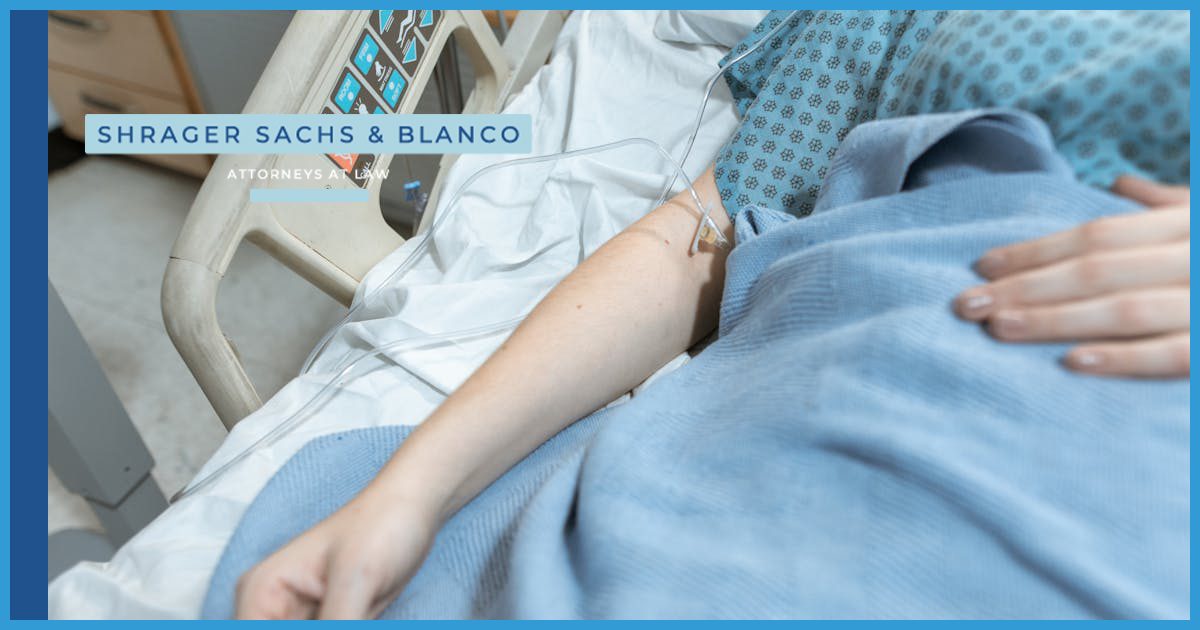In the healthcare industry, particularly in long-term care facilities and hospitals, one of the most prevalent challenges is the development of bedsores, also known as pressure ulcers.
These painful wounds result from prolonged pressure on the skin, often in individuals who are bedridden or have limited mobility. They can also be a common warning sign for negligence or medical malpractice in nursing homes and other eldercare facilities.
Understanding the stages of bedsores is essential for healthcare professionals and caregivers to provide timely interventions and prevent further complications.
Understanding Bedsores
Bedsores, or pressure ulcers, are localized injuries to the skin and/or underlying tissue, usually over bony prominences, resulting from pressure or pressure in combination with shear and/or friction.
They typically develop in areas where bones are close to the skin, such as the heels, hips, sacrum, and elbows.
Some common factors leading to bedsores include:
- Immobilization: People who are bedridden or have limited mobility are at higher risk because they may stay in one position for long periods, leading to pressure on specific areas of the body.
- Friction: Friction between the skin and bedding or clothing can exacerbate the pressure on the skin, especially if the person is frequently repositioned.
- Shear: This occurs when the skin moves in one direction while underlying tissues move in the opposite direction. Shear forces can damage blood vessels and increase the risk of tissue damage.
- Moisture: Prolonged exposure to moisture, such as sweating or incontinence, can soften the skin, making it more susceptible to damage.
- Poor nutrition: Malnutrition or dehydration can weaken the skin and reduce its ability to withstand pressure.
- Decreased sensation: Conditions such as diabetes or spinal cord injuries that reduce sensory perception can make it difficult for individuals to feel discomfort or pain, leading to a lack of awareness of the need to change positions.
- Poor circulation: Conditions that affect blood flow, such as diabetes or cardiovascular disease, can impair the body’s ability to deliver nutrients and oxygen to the skin, increasing the risk of tissue damage.
- Age: Older adults may have thinner skin and less subcutaneous fat, making them more susceptible to developing bedsores.
The Different Stages of Bedsores
Pressure injuries and decubitus ulcers, other names used to refer to bedsores, have several distinct stages, including:
Stage I: Early Signs of Tissue Damage
At the onset, bedsores manifest as Stage I wounds, characterized by non-blanchable erythema, or redness, of intact skin. Though the skin remains unbroken, it may feel different from the surrounding area—painful, firmer, softer, warmer, or cooler. In this stage, prompt intervention is crucial to prevent progression to more severe stages.
Stage II: Partial Thickness Skin Loss
Stage II marks the progression of bedsores, involving partial-thickness skin loss or damage to the epidermis and/or dermis.
At this point, the ulcer may present as an abrasion, blister, or shallow crater. While the wound remains relatively superficial, proper wound care is essential to prevent infection and promote healing.
Stage III: Full Thickness Tissue Loss
As bedsores advance to Stage III, full-thickness skin loss occurs, extending through the dermis and into the subcutaneous tissue. While bones, tendons, and muscles are not yet exposed, the ulcer appears as a deep crater.
Managing Stage III bedsores requires meticulous wound care and may involve more advanced interventions such as debridement.
Stage IV: Severe Tissue Damage
Stage IV represents the most severe form of bedsores, characterized by full-thickness skin loss with extensive tissue destruction, including muscle, bone, and supporting structures.
These wounds pose significant challenges in terms of treatment and may require surgical intervention.
Preventing Stage IV bedsores is paramount, as they carry a high risk of complications such as infection and even sepsis (blood poisoning).
Unstageable Bedsores
In some cases, the depth of the wound cannot be visualized due to the presence of slough or eschar in the wound bed.
These wounds are classified as unstageable. While the exact depth of tissue damage is uncertain, proper wound assessment and management are still essential to facilitate healing and prevent further deterioration.
Prevention and Management
Preventing bedsores is preferable to treating them once they develop. Healthcare professionals and caregivers can implement several strategies to reduce the risk of bedsores, including:
- Regular repositioning of immobile patients to relieve pressure on vulnerable areas.
- Using specialized support surfaces such as pressure-relieving mattresses and cushions.
- Maintaining proper nutrition and hydration to support skin health and wound healing.
- Keeping the skin clean, dry, and moisturized to prevent breakdown.
- Implementing a comprehensive skincare regimen, including regular inspections for early signs of skin damage.
Bedsores pose significant challenges in healthcare settings, affecting patients’ quality of life and increasing the burden on caregivers.
By understanding the different stages of bedsores and implementing preventive measures, healthcare professionals can minimize the occurrence of these debilitating wounds. Early recognition and prompt intervention are key to managing bedsores effectively and improving patient outcomes.
With a proactive approach to prevention and comprehensive wound care, the impact of bedsores can be mitigated, enhancing the overall well-being of patients under care.









